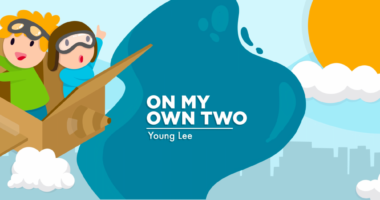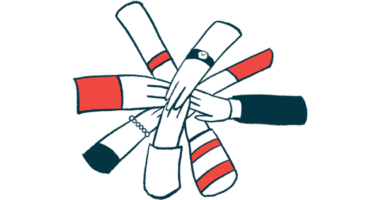‘No Cure’ Doesn’t Mean ‘No Hope’

I have the words “Charcot-Marie-Tooth” set as one of my Google alerts. As a result, I’ve come across many articles about CMT and CMTers. I love this.
For me, it’s a great way to stay informed about the CMT community and hear about some of the latest developments in CMT research.
However, sometimes I come across reports I wish had a bit more nuanced explanations about CMT. That’s because too often, writers with limited space end up focusing either on how severe CMT symptoms can be or how there still is no cure. I sometimes fear that this emphasis just encourages generalizations and perpetuates overly simplistic narratives, which can be dangerous.
I think about newly diagnosed CMTers trying to find information about what to expect and then getting discouraged. I hear stories about the interactions CMTers have with doctors who are just as confused as the patients after reading something in the news. Or I learn about CMTers who rely on comparisons to Parkinson’s disease or muscular dystrophy when trying to explain their condition, despite CMT being very different.
Finding joy
A common narrative is that our hope as disabled people is dependent upon whether a cure exists.
While simply stating that “there is no cure for CMT” is certainly factual, it’s always important to remember that “no cure” does not mean “no hope.” After all, we can find joy in life and live fully and earnestly without a cure. Living day to day with a disability or chronic condition with no cure is no reason for despair.
Besides, even if there is currently no cure or treatment for CMT, that doesn’t mean there never will be. Science is always developing, and it’s important to remain hopeful that a cure or treatment will happen one day.
Recently, I had a conversation about this topic with George Simpson, communications director at the CMT Research Foundation, and the father of a CMTer. He said that as someone who works for an organization with the singular focus of finding treatments and cures for CMT, seeing CMTers lose hope is disheartening.
“I’ve heard people say that their doctor told them, ‘There’s no hope for you. Just go about your life as best you can,’” Simpson said. “And honestly, there is hope. I would never want to overstate or say, ‘Hey, it’s going to happen tomorrow.’ But I certainly think [a cure or treatment] will happen in our lifetime.”
There is a path
Simpson says it’s the optimism of the researchers and scientists he’s in communication with that leaves him with hope that a cure for CMT will be found.
“We see in the researchers hope and conviction that they now have a path,” Simpson said. “Researchers and the scientists are, for the first time, saying, ‘OK we can do this.’”
And there is a lot to be excited about on the research front regarding a cure or treatment for CMT. South Korean researchers are exploring the potential of stem cell therapy treatments, while other researchers are testing the safety of drug treatments in clinical trials, some for CMT1A and at least one for CMT2. And the CMT Research Foundation is funding studies to identify nanoparticles that could deliver gene therapies to cells affected by CMT.
We must remain hopeful and push back against narratives and simple generalizations that can misinform people. Without a bit more nuance, I’m afraid a lot of the coverage of CMT, as well as other chronic conditions, is doing the disabled community a disservice. We should be able to expect better.
Note: Charcot-Marie-Tooth News is strictly a news and information website about the disease. It does not provide medical advice, diagnosis, or treatment. This content is not intended to be a substitute for professional medical advice, diagnosis, or treatment. Always seek the advice of your physician or other qualified health provider with any questions you may have regarding a medical condition. Never disregard professional medical advice or delay in seeking it because of something you have read on this website. The opinions expressed in this column are not those of Charcot-Marie-Tooth News or its parent company, Bionews, and are intended to spark discussion about issues pertaining to Charcot-Marie-Tooth.







mike
As a father of a cmt 2A & K sufferer, I agree, there is a lot of cause for hope. We continue to get more and more scientific updates. All pointing to different paths of travel to reach the same end; more paths mean more opportunities for success. The publications prepared and presented by the scientific community appear to be aimed at this community, no bad thing as sharing will ultimately bring reward. My message is 'do not as lay-people be put off, or confused by the 'science'',' yes, it can for the uninitiated (like myself!)be difficult to follow and understand, Yet, at the same time it is taking us down these paths to a destination.... a repeat of what has already been said "not if, but when''
doug
Love this post. As someone with CMT I was told by the doctor who diagnosed me that there is no cure or treatment and I can expect a steady deterioration until I'm immobilized in a wheelchair.
After the shock kicked in, the next time I talked to her I told her she simultaneously gave me a diagnosis and killed whatever hope I might have been able to salvage. I said she was undoubtedly smart, but that was an unnecessarily cruel approach.
There's plenty of things I can still do, and there are also many things I need to be doing to delay the deterioration. And the hope that there is a cure or treatment down the road provides a small beacon of light to be optimistic about. I'd rather hold out the hope it is there, than coldly pronounce it's not.